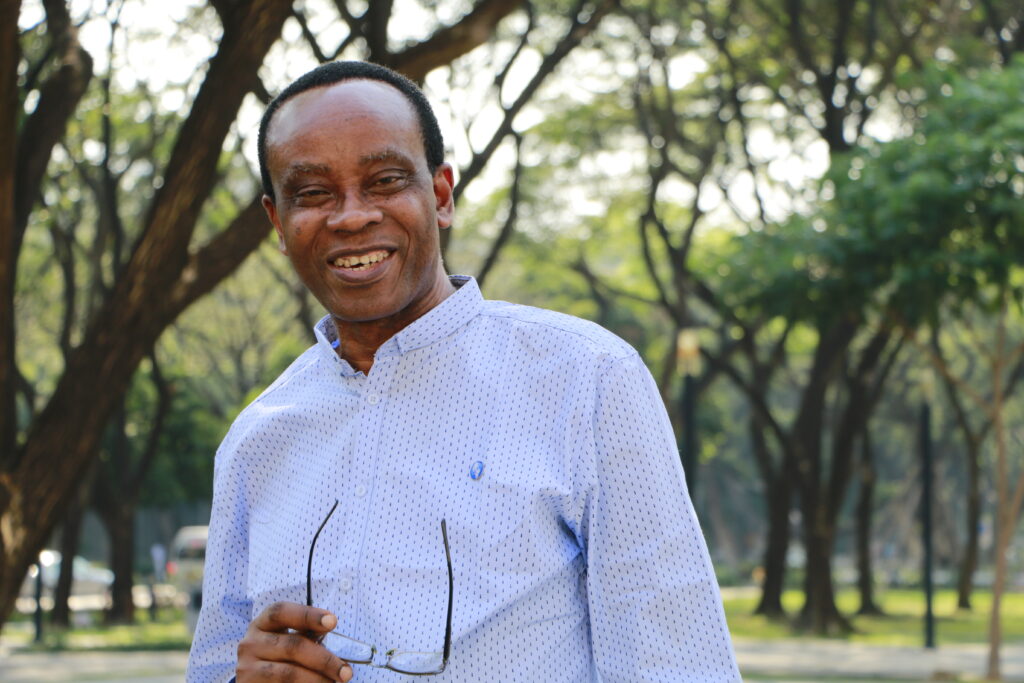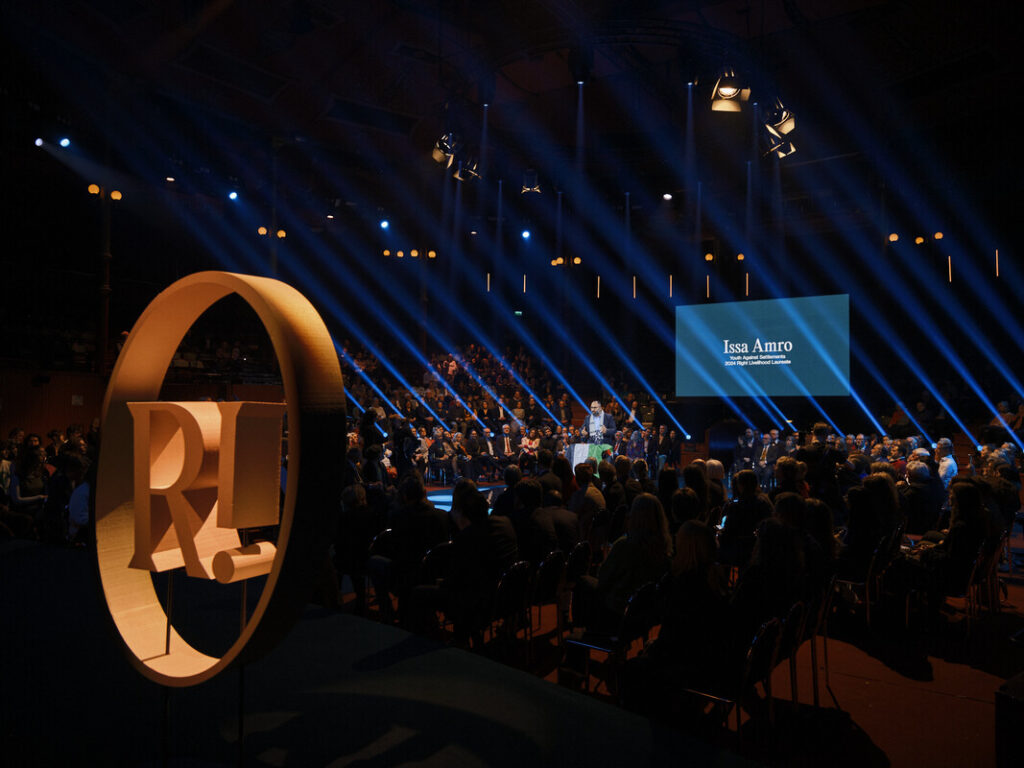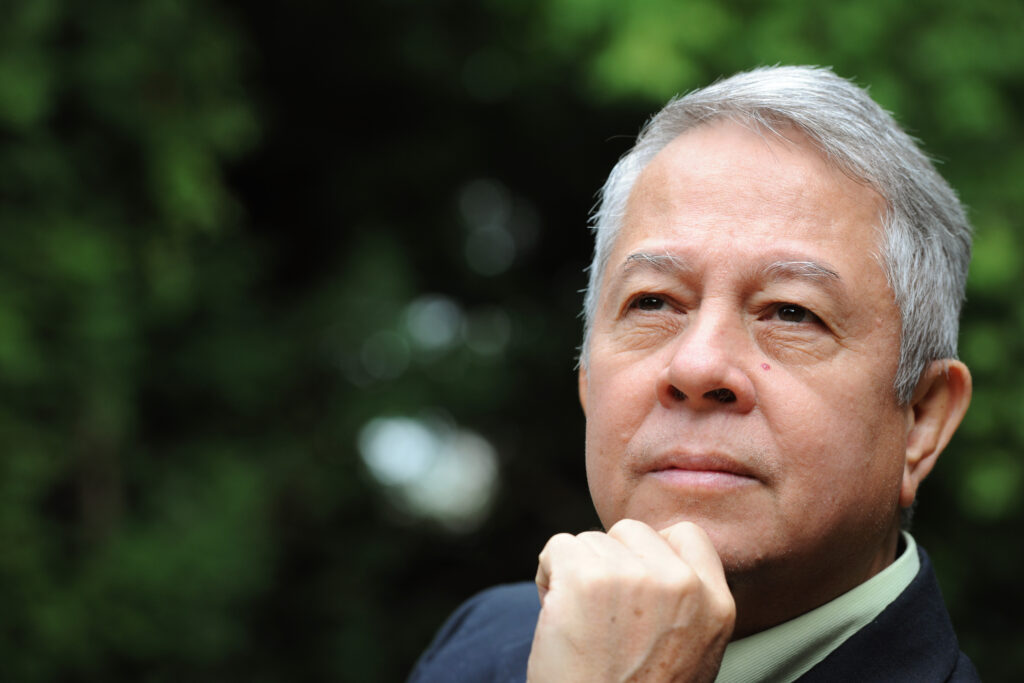What does it mean to defend rights and land as an Indigenous woman, in systems shaped by patriarchy, racism and exclusion? In this conversation, Indigenous rights advocate and 2024 Right Livelihood Laureate Joan Carling reflects on how women are central to the defence of land, life and community, yet are often excluded from decision-making in both state institutions and traditional structures.
From resisting extractivism to advancing culturally appropriate healthcare, Carling shares how Indigenous women are building grassroots power and forging cross-movement alliances. She highlights a major breakthrough with the UN CEDAW Committee, which recognised the indivisibility of Indigenous women’s individual and collective rights.
This conversation took place in March 2025 during the UN Commission on the Status of Women (CSW) in New York.
Q: As a prominent land defender and Indigenous rights advocate, what is the current role of women in the Indigenous rights movement? What can be done to centre women even more in the movement and why is their leadership important?
Joan Carling:
Being in the Indigenous movement for over 30 years, I think women are naturally part of the Indigenous peoples’ movement. We are the ones who have the closest relationship with nature, which is being attacked—an attack on our rights over our land, spirits, territories and resources. When we are displaced from our lands and resources, we become more vulnerable to violence. That has been clearly shown by incidents where, when women are outside their territories, they are subjected to violence, especially from outsiders. That is a major reason why Indigenous women are on the front lines of protecting our lands and resources.
Women are also food producers, using the land to provide for our families. If we’re not allowed to do that, it goes against the role we play in our communities, especially in feeding children and ensuring their health. When resources are destroyed and we cannot provide for our families, women feel even more powerless. So, for Indigenous women, defending our territories and resources is not just a choice, it’s a duty. It is our role in our communities, clans, tribes and peoples.
Q: What role do Indigenous women play in the decision-making process?
Carling:
In terms of decision-making, Indigenous women face major challenges. At the community level, many of our traditional systems remain patriarchal, with men dominating decisions while women do much of the work—feeding families, managing resources, caring for the elderly and raising children. Yet we are often excluded from decisions that shape community affairs.
That’s why many Indigenous women are challenging these patriarchal systems and asserting that we must be included in decision-making. We need a seat at the table and, more importantly, we need to be listened to. Especially on decisions that directly affect our roles and contributions to our families and communities.
Q: Can you talk about the relationship between the protection of Indigenous land and the empowerment of Indigenous women?
Carling:
As Indigenous peoples, we have rights over our lands, territories and resources in order to survive and thrive collectively. Women manage and conserve these resources for our families and future generations. We hold traditional knowledge about sustainable food systems, conservation and resource management.
If our land rights are not recognised, we become powerless. We lose our ability to manage resources in line with our right to self-determination. We can’t ensure food security, preserve traditional knowledge or protect future generations. Our communities cannot survive. The destruction of our territories is an attack on women’s dignity, because we identify deeply with the land. We are an integral part of the ecosystems in which we live.
Q: What are some struggles Indigenous women face that non-Indigenous women may not?
Carling:
Because of prevailing racism and discrimination, Indigenous women are disproportionately impacted. We experience more extreme forms of violence and marginalisation simply because we are Indigenous. We’re labelled as backward, uneducated or anti-development. This narrative is used by those in power to justify land grabs and resource exploitation.
These attitudes lead to systemic disadvantages. In education, even where schools exist in our territories, we’re not allowed to speak our languages. This leads to high dropout rates, especially among girls. In healthcare, our traditional systems—like Indigenous birthing practices—are discriminated against, even when they are more effective. In employment, other women are often preferred simply because they speak the national language. Our language and culture become barriers. We are geographically remote, and while energy projects are built in our areas, we don’t benefit from them. Our economic activities are harder. Women may walk long distances for water or spend hours pounding rice due to lack of basic technology like rice mills.
Meanwhile, the irony is that our lands are taken in the name of national development—through mining, agribusiness and energy projects—yet we receive no roads, no clinics, no schools. Non-Indigenous communities benefit, while we are left behind. The discrimination is systemic, and women suffer the most.
Q: Can you share an example of how culturally appropriate services could better support Indigenous women?
Carling:
I was born with my mother sitting. That’s traditional birthing. In Latin America, women give birth seated on a special chair. It’s a practice that has been scientifically proven effective. That’s why the UNFPA acknowledged it. In some places, clinics have started accommodating these traditional birthing methods, even adding dormitories for families who travel long distances.
This is what we need, services that reflect our culture and geography. Imposing foreign systems only increases alienation and discrimination.
Q: Can you talk about global solidarity movements supporting Indigenous rights and any examples of successful cross-movement collaborations?
Carling:
Faced with these challenges, Indigenous women have built strong solidarity networks—local, national, regional and global. One major success is our advocacy with the Committee on the Elimination of Discrimination Against Women (CEDAW), which led to General Recommendation 39. It recognises that the individual rights of Indigenous women and our collective rights as Indigenous peoples are indivisible.
This matters because our rights are often treated separately, either as women or as Indigenous peoples. On land rights, for instance, some argue women should have only individual land rights. But for us, collective rights offer greater protection. In Cambodia, community land rights were legally recognised, but implementation still favoured land titles in men’s names. The same happens in India. Men are more likely to sell the land, while women depend on it to feed and care for their families. Our knowledge and survival are tied to the land.
We also work collectively. Women manage forests together, not just individual plots. Collective ownership builds community and resilience. If land becomes individual property, we lose that support system.
Q: Can you share another example of global cross-movement collaboration?
Carling:
When women from around the world come together, it’s more than solidarity. We share our experiences and realise we face similar forms of rights violations, even in different contexts. That gives us courage and strength. It helps women at the community level see that they are not alone.
Many women defending their land feel abandoned. But when they hear that Indigenous women from Africa, Latin America, North America and the Arctic stand with them, it empowers them. It shows that, together, our voices can make a global impact.



























































































































































































































































































































